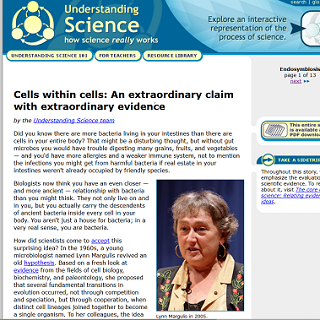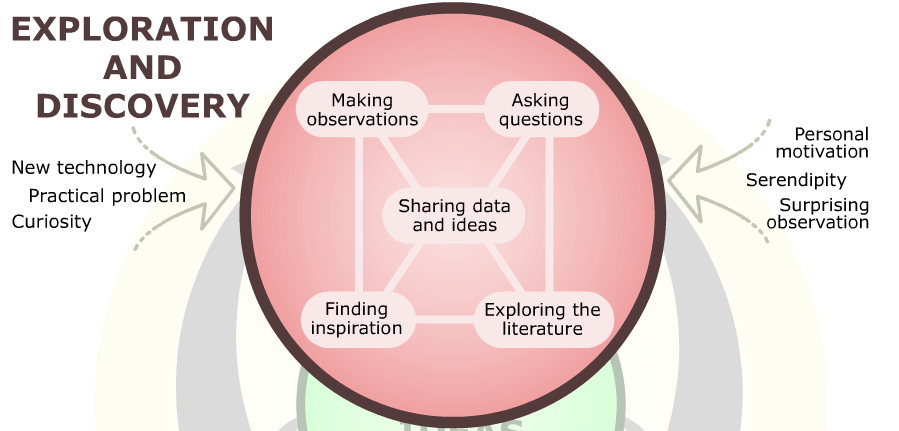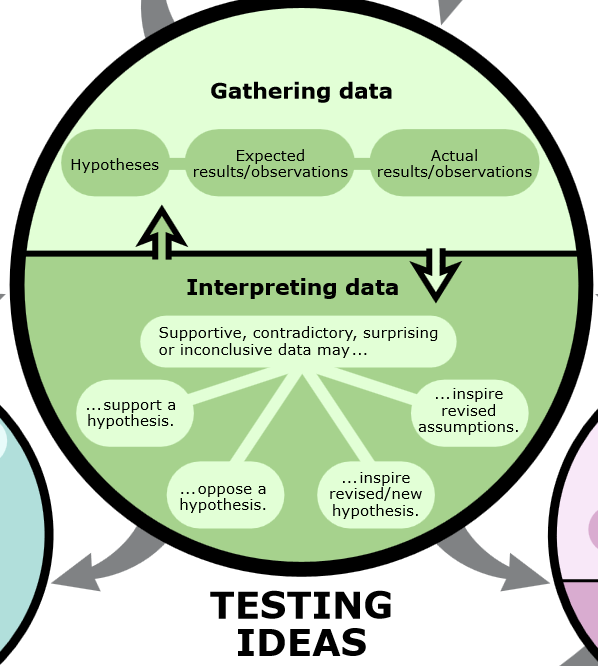Endosymbiosis - Nature of Science
 The idea that mitochondria once existed as free living bacteria and that a simple cell engulfed one of these bacterial cells and promptly became a eukaryote cell is a difficult idea to ‘prove’. The fact that this happened millions of years ago doesn't help the science but is a great illustration of the nature of science. This story of a biologist’s tenacity and ingenuity in her research over sixteen years illustrates some important ideas about the nature of science. Read the webpages and answer the questions to gain an insight into the scientific method.
The idea that mitochondria once existed as free living bacteria and that a simple cell engulfed one of these bacterial cells and promptly became a eukaryote cell is a difficult idea to ‘prove’. The fact that this happened millions of years ago doesn't help the science but is a great illustration of the nature of science. This story of a biologist’s tenacity and ingenuity in her research over sixteen years illustrates some important ideas about the nature of science. Read the webpages and answer the questions to gain an insight into the scientific method.
Lesson Description
Key ideas about the nature of science
- Science can test hypotheses about events that happened long ago.
- Scientific ideas are tested with multiple lines of evidence.
- Science is a community endeavor - new discoveries depend on a the scientific community.
- Scientific ideas evolve with new evidence.
- The scientific method can overcome individual biases.
Activity 1: Study the work of Lynn Margulis and her endosymbiosis research?
Read the first five pages of the article from Berkeley University, ![]() A world under the microscope
A world under the microscope
This diagram shows the flow of activity in the 'exploration and discovery' of ideas in Science. (Nature of Science)

Screenshot from: http://undsci.berkeley.edu/article/scienceflowchart
Activity 2: Answer the following questions using  Endosymbiosis student worksheet
Endosymbiosis student worksheet
- Which aspects of 'exploration and discovery' lead Lynn Margulis to begin her research into the theory of endosymbiosis? (click the eye to display a model answer)
She made observations of
- amoeba engulfing food
- DNA replicating during cell division
- mitochondria dividing in eukaryote cells.
- chloroplasts containing their own DNA and reproduce by splitting in two
She found inspiration in the work of Gregor Mendel
She explored the literature (i.e. she read about the work of other scientists)
This diagram shows steps in the testing of ideas illustrating how scientists gather data to support or falsify their ideas.

Screenshot from: http://undsci.berkeley.edu/article/scienceflowchart
- Outline the hypothesis which Lynn Margulis stated at the start of her research into endosymbiosis.
The hypothesis stated that bacteria experienced several episodes of endosymbiosis which lead to the formation of eukaryotic cells, once for mitochondria, for chloroplasts, and also for flagella (microtubules).
- In what ways was the scientific community an obstacle to the acceptance of the research?
Parsimony - scientists prefer simpler explanations over more complex ones, evolution already explained most observations.
Inconsistency with the accepted theory of evolution - the accumulation of small changes is not the same as large changes from a single endosymbiosis.
Bias - most scientists working on evolution were focused on large animals.
- Which parts of the data she collected were supportive of the hypothesis?
Mitochondria can reproduce themselves, they contain their own genetic material (DNA) which can code for traits within the mitochondria, and they are free living prokaryote relatives of mitochondria.
- Which parts of the data were contradictory or inconclusive?
The evidence for endosymbiosis of flagella material is not conclusive, the evidence for the presence of DNA or RNA is not strong and does not support the hypothesis of endosymbiosis at present.
- How did she use evidence which opposed a hypothesis to support her own hypothesis?
She found no evidence to support the step-by-step evolution of mitochondria within cells. No cells have been seen with simple forms of mitochondria showing these steps.
Teachers' notes
This activity works well if you print each page from the article just once (or twice in a large class) and ask students to read just one page and then to explain their pages to the class in a logical order.
Steps for running the activity:
- Give out a page to each student
- Silent reading (5 minutes) - highlight key points and any questions in the text
- Sharing - tell a partner about your page, and listen to them describing their page (10 minutes)
- Note-it - write a short summary of the main idea on a sticky note.
- Each student uses their sticky note and the highlights to explain what information is in each page.
The evidence for the theory of endosymbiosis is a great opportunity to review the structure of prokaryote and eukaryote cells.
There is also an opportunity to introduce the idea of the three Domains of classification, as the Archae (bacteria) are mentioned in the information.

 IB Docs (2) Team
IB Docs (2) Team
